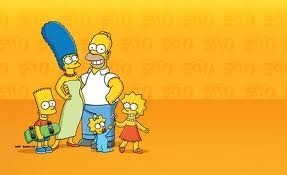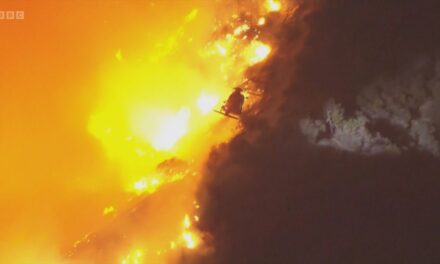My heart leaps up when I behold
A rainbow in the sky:
So was it when my life began;
So is it now I am a man;
So be it when I shall grow old,
Or let me die!
The Child is father of the Man;
And I could wish my days to be
Bound each to each by natural piety.
— William Wordsworth from ‘My Heart Leaps Up’ (1802)
Many critics have misperceived Ken Burns as a romantic. I’ve never seen him that way. My take has always been that he’s more a documentary poet attuned to America’s idealistic aspirations. As a point of contrast, consider the above poem by the romantic poet William Wordsworth, which came to mind after watching a DVD screener of Ken Burns’s latest Public Broadcasting Service (PBS) documentary, The Dust Bowl. Wordsworth expresses an adult’s guileless and childlike reconnection with nature at the sight of a rainbow. The two-dozen elderly witnesses who Burns employs also speak from the heart as they describe in compelling detail how the once-in-a-century natural tragedy now known as the Dust Bowl has marked them for the rest of their lives.
More than any of Ken Burns’s previous PBS specials, the testimonies of these interviewees in their mid-eighties and nineties serve as the informational and emotional foundation on which this two-part four-hour historical documentary is built. Like Wordsworth, their words are still filled with wonder, only this time the emphasis is on the terrifying and awesome power of the environment out of balance that they inhabited more than eight decades earlier. These superannuated witnesses pull no punches as their recollections are delivered with an intensity that seems as if the experiences with nature that they are describing happened just yesterday.
Time and again, the elderly survivors recount stories of a nearly decade long environmental apocalypse where the dust penetrated wherever the air could travel. In the fields, cattle suffocated. Inside homes, dust pneumonia reached epidemic proportions. As the Depression worsened, farm prices plummeted. Many people lost their self-respect. Some even committed suicide. Most contemporary viewers will no doubt be surprised by the fury and magnitude of a Depression era storm cycle that they thought they knew. ‘I don’t care who describes it to you,’ recalls octogenarian Don Wells of Cimarron County, Oklahoma, ‘nobody can tell it any worse than what it was. There is no way for it to be exaggerated. It was that bad.’
Ken Burns’s longtime cinematographer, Buddy Squires, does contribute an early Edenic shot of a rainbow gracing the contours of an Oklahoma wheat field before all hell literally breaks loose. Burns’s narrator, Peter Coyote, calls it ‘a natural catastrophe of biblical proportions.’ At its height in the mid-thirties, the ecosystem of the southern Great Plains was completely out of sync. First the jackrabbit population exploded in which hares overran farmlands and homesteads; then an invasion of grasshoppers followed where an eyewitness describes that ‘it almost looked like the ground was moving.’ One of the oldest interviewees, Dorothy Williamson of Prowers County, Colorado, sums it all up by calling the horror of the Dust Bowl both ‘surreal’ and ‘evil.’
The Dust Bowl is a metaphor conjured up by an Associated Press reporter, Robert Geiger, to describe the geographic epicenter located in the Oklahoma panhandle where he and photographer, Harry Eisenhard, were engulfed by the greatest of all black blizzards on April 14, 1935. This unimaginable duster was 200 miles wide with 65 miles an hour winds, arriving on what became known as Black Sunday. It caught the attention of the whole country for its crippling destructiveness as well as its arresting power.

Eisenhard’s ‘Black Sunday 1935’:
One of the revelations of this historical documentary is the scale of the natural calamity. It lasted for almost a decade—1931 to 1939—and comprised hundreds of rolling storms that mimicked tornados on their sides sweeping over the nation’s southern prairielands. It was one of the country’s last unsettled frontiers because of its semiarid and treeless environment. Farming in this lawless territory known as ‘No Man’s Land’ was considered a fool’s errand, but once the buffalo was wiped out and all the Indians were put on reservations, Congress enlarged the Homestead Act in 1909, giving 320 acres to any takers hearty or desperate enough to stake a claim.
Who scrambled into the region were mostly Scots-Irish and Germans from the North and East, and Latinos from the South. They knew little of modern agricultural methods other than utilizing the latest technologies. As a result, mechanized plowing without the benefits of countervailing conservation techniques led to windfall wheat profits throughout the teens and twenties, while the native grasslands that ensured some moisture during the region’s frequent dry periods were virtually eliminated. Fueled by greed and ignorance, the stage was set for what Ken Burns calls ‘the story of the greatest man-made ecological disaster in American history.’
At first it may appear that Burns has embraced a wide assortment of subjects in his twenty-two major PBS specials so far—Brooklyn Bridge (1982), The Shakers: Hands to Work, Hearts to God (1985), The Statue of Liberty (1985), Huey Long (1986), Thomas Hart Benton (1989), The Congress (1989), The Civil War (1990), Empire of the Air: The Men Who Made Radio (1992), Baseball (1994), The West(1996), Thomas Jefferson (1997), Lewis and Clark: The Journey of the Corps of Discovery (1997), Frank Lloyd Wright (1998), Not For Ourselves Alone: The Story of Elizabeth Cady Stanton and Susan B. Anthony (1999), Jazz (2001), Mark Twain (2002), Horatio’s Drive: America’s First Road Trip(2003), Unforgivable Blackness: The Rise and Fall of Jack Johnson (2005), The War (2007), The National Parks: America’s Best Idea (2009), Prohibition (2011) and now The Dust Bowl (2012)—but there are a handful of common denominators that bind all these American stories together.
To begin with, Ken Burns’s pluralist histories are fundamentally liberal on social issues, such as promoting green environmental policies through the problem-solution structure of The Dust Bowl, while at the same time traditional when it comes to core American values and the nation’s institutions. Moreover, his well-known and distinctive style involving off-screen narration, rephotographing still images, and period music has become normative for a generation of historical documentarists. In addition, Burns is a producer-director as bricoleur, painstakingly researching, retrieving, and artistically reassembling live and stock footage, photographs, and other material artifacts with his creative team into a poetic whole that reflects his vision of America. His PBS specials are also a mixture of history and myth on film, fully expressing the hybrid nature of popular history. And finally as a popular historian, his ongoing strategy is to use the past to define the present and discover the future.
It is therefore impossible not to see The Dust Bowl through the lens of the present. In today’s parlance, this historical documentary is most concerned with the lowest rung of what is currently referred to as the other 99%. Although Oklahoma is most identified with the Dust Bowl, the nearby area affected also reached into Colorado, Kansas, and Texas. Twenty-five percent of the region’s inhabitants were forced out of their homes and on to the road. It caused the greatest migration in American history, even dwarfing the number of people who journeyed west on the Oregon Trail or to the Gold Rush during the mid-nineteenth century.
Where Ken Burns has called America’s racial and ethnic heritage the ‘connecting thread’ in all of his work, The Dust Bowl is more about class. It is a story of poor rural folk being dispossessed. Whether the migrants came from Oklahoma or elsewhere, they all were lumped together as ‘Okies,’ which was a label synonymous with ‘white trash’ at the time. One of those displaced itinerants, Woody Guthrie makes several cameos in The Dust Bowl, such as during the Black Sunday sequence when a number of elderly eyewitnesses recalled how people in the region thought the ‘end of the world’ had come with the storm. With understated irony, Guthrie composed ‘So Long, It’s Been Good to Know You’ as his response to this most frightful of all black blizzards.
;
Like Pare Lorenz’s The Plow That Broke the Plains (1936), which makes a brief appearance in part two, The Dust Bowl underscores how engaged FDR and his alphabet soup of New Deal programs served as a welcome corrective to the unremitting hardship endured in the Dust Bowl by bringing jobs to the region, providing loans to farmers, and then educating them to the latest agricultural methods. It’s hard not to think of the U.S. government’s recent failure during Katrina or its success in the 2008 auto bailout as another instance in which Washington intervened in the face of an economic emergency of national significance.
Nevertheless, Ken Burns is more a poet than a polemist in The Dust Bowl. Eschewing the didacticism and literalness of The Plow That Broke the Plains, Burns’s The Dust Bowl is more in the documentary tradition of the Farm Security Administration photographers Arthur Rothstein and Dorothea Lange. His PBS special contains an intimate set piece of how Rothstein captured what is probably the most iconic Dust Bowl photograph taken during a 1936 storm in Cimarron County, Oklahoma.

Rothstein’s ‘Farmer and Two Sons’:
Similarly, Burns’s The Dust Bowl focuses intently on Dorothea Lange’s 1936 image of Florence Owen Thompson clutching her three children as she stares despairingly into the distance.

Lange’s ‘Migrant Mother’:
In the end, Ken Burns and his co-producers Dayton Duncan and Julie Dunfey tell a story made relevant by many profound and moving remembrances in both words and pictures. Scheduled for its PBS premiere on November 18 and 19, The Dust Bowl is a work of tragic beauty.
Gary R. Edgerton is Professor and Dean of the College of Communication at Butler University. One of his earlier books is Ken Burns’s America (Palgrave for St. Martin’s Press, 2001). His latest volumes are Westerns: The Essential Journal of Popular Film and Television Collection with Michael T. Marsden (Routledge, 2012) and Mad Men: Dream Come True TV (I.B. Tauris/Palgrave Macmillan, 2011), while The Sopranos is forthcoming in March 2013 from Wayne State University Press as part of its TV Milestones series. He also coedits the Journal of Popular Film and Television.





